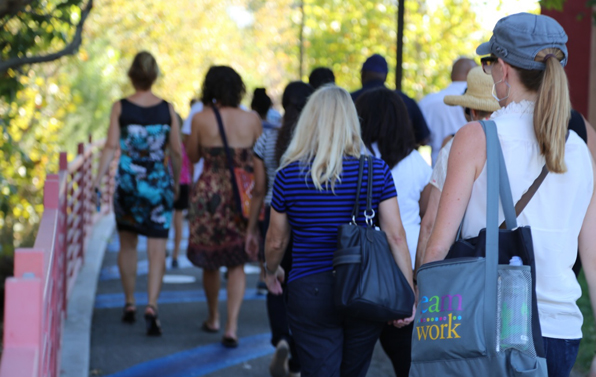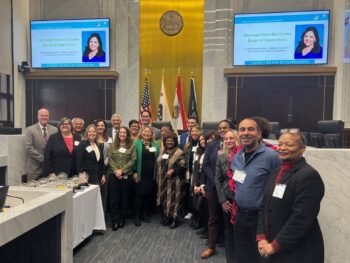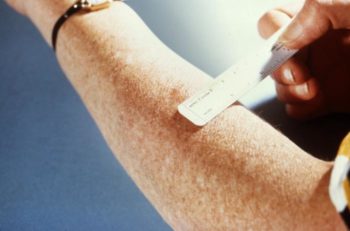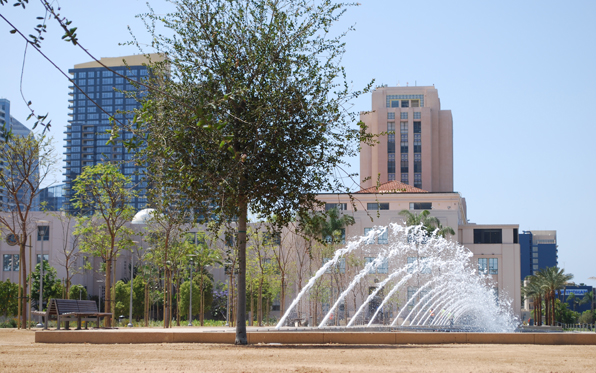“Five!”
“Eight!”
“Four!”
“Two!”
One by one the nearly two dozen residents of southeastern San Diego called out a number: the score they gave on a scale of one to ten for how walkable they thought the intersection of Euclid Avenue and Market Street is in their neighborhood.
They were on a walking tour Wednesday with national walking expert Mark Fenton as part of a series of Live Well San Diego events designed to get community input on safe and healthy transportation options for residents. The tour started at the Malcolm X Library.
“That’s a lot of range – from two to eight,” said Fenton. “That’s OK. We have a lot of perspectives.”
One of the “two” scores came from Jacqueline Jones. She is blind and pointed out plenty of things that needed work.
She noted that the driveways along that stretch of road create dips in the sidewalks and were tripping hazards.
“And the trees were hanging down and not trimmed, so I would walk straight into them,” she said.
It’s a story that is similar in a lot of neighborhoods all over America. Fenton is conducting these walk audits in cities across the country as advocates trying to create healthier communities zero in on making sure there are safe places to walk and bike.
“One of the ways you get people thinking about design is to do interactive community workshops like this,” said Fenton. “Just telling people to exercise and eat better has not worked. We’ve been doing that for 20 years.
“The answer is to build a better community where you get more physical activity and eat a better diet as part of daily life.”
The group walking on that stretch of Market Street noted other minuses – no bike lanes and crosswalks not marked with white reflective paint – but pluses as well. Residents liked the trees lining parts of the sidewalks that allowed for shade. They were also happy to have pedestrian signals with an activation button and countdown timers.
The walking tour continued across Market Street, past the Jacobs Center and into the retail area on the corner of Euclid and Market before returning to the library.
Participants were encouraged to take part in community design discussions and work with local planning commissions and their city council to improve walking conditions in their neighborhoods.
The second most-prevalent thing you are likely to die of is a physically-inactive lifestyle according to Fenton.
“I spend less of my time scolding people to exercise and more of my time trying to build a better world where you get (exercise) without thinking about it,” he said. “Where it’s so inviting to go for a walk, where it’s so easy to take the bus, where it’s so safe to ride your bicycle that you do it because it’s the better choice.”
The event was sponsored by the County of San Diego Health and Human Services Agency with funding from the Centers for Disease Control and Prevention, the Urban Collaborative Project, Circulate San Diego and the Lincoln Park Communities of Excellence Project.






